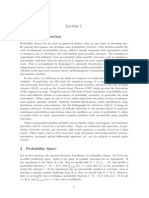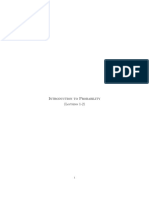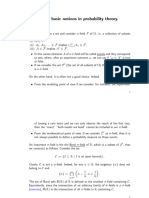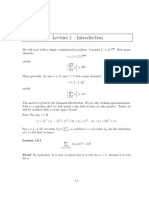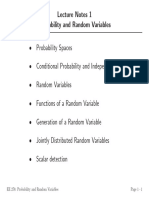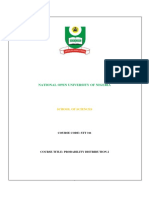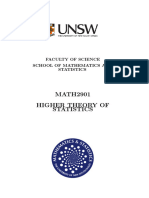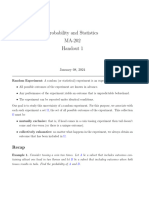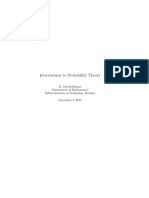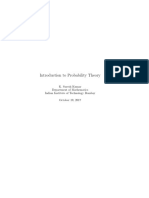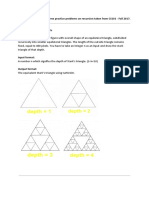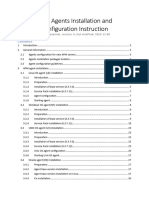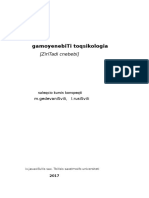0% found this document useful (0 votes)
42 views14 pagesLecturenotes3 4 Probability
This document introduces probability theory and provides properties of probability measures. It defines a probability space as (Ω, F, P) where Ω is the sample space, F is a sigma-algebra on Ω, and P is a probability measure. It then lists six properties of probability measures including additivity, subadditivity, continuity, and Boole's inequality. It provides proofs for these properties and concludes with an example of solving a points problem between two players using a coin toss experiment.
Uploaded by
arjunvenugopalacharyCopyright
© © All Rights Reserved
We take content rights seriously. If you suspect this is your content, claim it here.
Available Formats
Download as PDF, TXT or read online on Scribd
0% found this document useful (0 votes)
42 views14 pagesLecturenotes3 4 Probability
This document introduces probability theory and provides properties of probability measures. It defines a probability space as (Ω, F, P) where Ω is the sample space, F is a sigma-algebra on Ω, and P is a probability measure. It then lists six properties of probability measures including additivity, subadditivity, continuity, and Boole's inequality. It provides proofs for these properties and concludes with an example of solving a points problem between two players using a coin toss experiment.
Uploaded by
arjunvenugopalacharyCopyright
© © All Rights Reserved
We take content rights seriously. If you suspect this is your content, claim it here.
Available Formats
Download as PDF, TXT or read online on Scribd
/ 14

